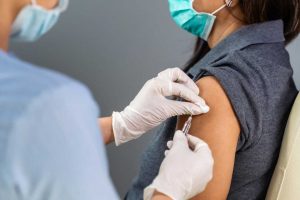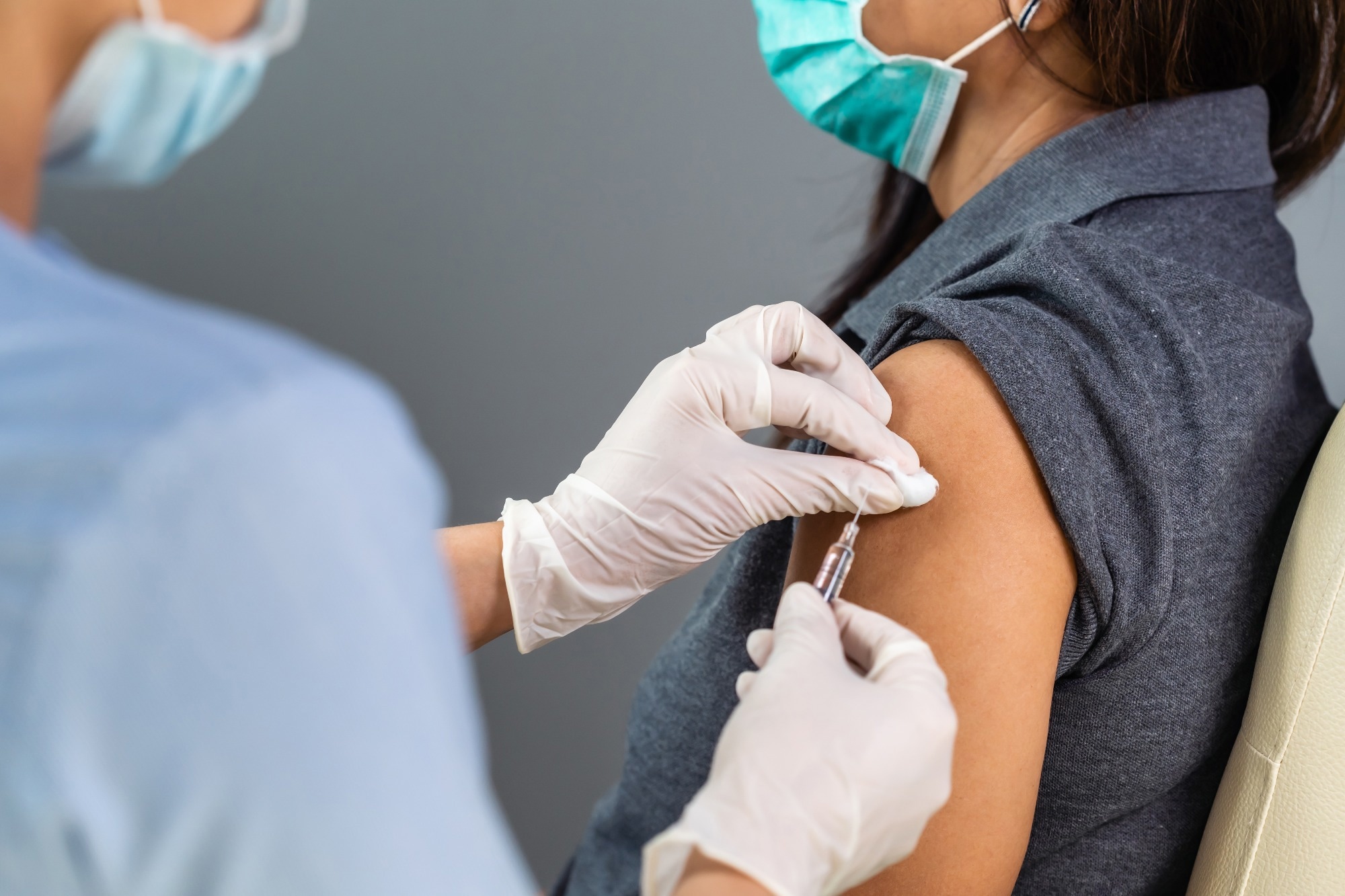Naked mRNA delivered using needle-free PYRO injection presents a safe and effective potential vaccination method


 *Important notice: bioRxiv publishes preliminary scientific reports that are not peer-reviewed and, therefore, should not be regarded as conclusive, guide clinical practice/health-related behavior, or treated as established information.
*Important notice: bioRxiv publishes preliminary scientific reports that are not peer-reviewed and, therefore, should not be regarded as conclusive, guide clinical practice/health-related behavior, or treated as established information.
In a recent study posted to the bioRxiv* preprint server, researchers examined the vaccination effects and local antigen expression efficiency of a needle-free vaccination technique involving pyro-drive liquid jet injection (PYRO) to deliver the naked messenger ribonucleic acid (mRNA) to the skin.

Background
Immunology eBook

The development of mRNA vaccines that encode antigens has been revolutionary in vaccine technology due to its efficacy and ease of design and production. The two coronavirus disease 2019 (COVID-19) mRNA vaccines mRNA-1273 and BNT162b2 have been widely used during the COVID-19 pandemic. These vaccines used mRNA enclosed in lipid nanoparticles to improve the delivery and production of the encoded severe acute respiratory syndrome coronavirus 2 (SARS-CoV-2) antigens in various tissues, including the liver, spleen, and draining lymph nodes. However, the systemic migration of lipid nanoparticle-enclosed mRNA and the multifaceted nature of the immune response have raised safety concerns and made understanding the mechanisms of mRNA vaccines difficult.
While the delivery of naked mRNA could result in its rapid degradation, presenting the mRNA to areas rich in antigen-presenting cells, such as the dermis, could improve the vaccine’s efficacy. Recent studies using the lipid nanoparticle mRNA vaccines reported that only one-fifth to one-tenth of the intramuscular vaccine dose was required while delivering the vaccine through the skin, to produce comparable cellular and humoral immunity.
About the study
In the present study, the researchers delivered naked mRNA encoding firefly luciferase (fLuc) into the skin of Balb/C and C57BL/6J mice using PYRO. Naked (fLuc) encoding mRNA and mRNA enclosed in lipid nanoparticles were also injected using a needle and syringe (N&S) intraperitoneally into the mice. In vivo imaging was used to quantify protein expression and luminescence flux was calculated. Additionally, after intraperitoneal injection, the spleen, liver, and lymph nodes were extracted for ex vivo imaging.
The systemic distribution of fLuc protein expression was compared for PRYO injection and N&S injections. The skin surrounding the injection site and the draining lymph nodes close to the injection site were also excised and fixed for histopathological observations. Hematoxylin and eosin and immunofluorescent staining techniques were used for the histological and optical microscopy observations.
Additionally, quantitative polymerase chain reaction (qPCR) was used to evaluate the proinflammatory transcripts in the liver, spleen, and lymph nodes such as interferon-beta (IFN-β) and interleukin-6 (IL-6). Furthermore, N1-Methylpseudouridine (m1Ψ)-modified mRNA (OVA) was used as a model antigen to investigate antibody production. Whether the prime and booster doses of the injection should be administered in the same or different positions was also evaluated with ipsilateral administration on one flank and contralateral administration on both flanks.
The potential use of naked mRNA delivered by PYRO injection in vaccines was evaluated in mice and non-human primates (cynomolgus monkeys) using naked SARS-CoV-2 spike mRNA, with surrogate virus neutralization tests to determine the neutralizing potential of the plasma in the vaccinated animal models.
Results
The results showed that naked mRNA delivered by the jet injection technique outperformed the commonly used lipid nanoparticle-enclosed mRNA in inducing humoral immunity at mRNA doses of the highest tolerance in mice. The antigen-presenting cells in the skin at the injection site take up the antigens and migrate to the closest draining lymph nodes, where a robust immune response is induced without the systemic distribution of the mRNA. The naked mRNA delivered through the PYRO injection technique was able to generate effective antibody responses, cellular immunity, and neutralizing antibodies in the mice and primate models. Furthermore, no adverse reactions were observed.
The strictly localized expression of the mRNA-encoded protein produced no systemic toxicity, as opposed to the lipid nanoparticle-enclosed mRNA. Moreover, the localized distribution allowed the contribution of antigen expression in vaccination effects to be studied independently of the roles of the spleen, liver, and lymph nodes. The findings also indicated that localized antigen expression was sufficient for the induction of cellular and humoral immunity, at doses similar to the lipid nanoparticle-enclosed mRNA vaccines.
Conclusions
Overall, the findings reported that the direct injection of naked mRNA using needle-free techniques such as jet injection elicited comparable immune responses and neutralizing antibodies, with no adverse reactions. This method presents a safe and effective vaccine delivery option while circumventing the safety concerns of systemic vaccine spillage.
*Important notice
bioRxiv publishes preliminary scientific reports that are not peer-reviewed and, therefore, should not be regarded as conclusive, guide clinical practice/health-related behavior, or treated as established information.

 *Important notice: bioRxiv publishes preliminary scientific reports that are not peer-reviewed and, therefore, should not be regarded as conclusive, guide clinical practice/health-related behavior, or treated as established information.
*Important notice: bioRxiv publishes preliminary scientific reports that are not peer-reviewed and, therefore, should not be regarded as conclusive, guide clinical practice/health-related behavior, or treated as established information.
- Preliminary scientific report. Saed Abbasi, Miki Matsui-Masai, Akimasa Hayashi, Theofilus Tockary, Shiro Akinaga, Kazunori Kataoka, and Satoshi Uchida. (2023). Cutaneous jet-injection of naked mRNA vaccine induces robust immune responses without systemic vaccine spillage. bioRxiv. doi: https://doi.org/10.1101/2023.02.27.530188 https://www.biorxiv.org/content/10.1101/2023.02.27.530188v1
Posted in: Medical Science News | Medical Research News | Disease/Infection News
Tags: Antibodies, Antibody, Antigen, Coronavirus, covid-19, Efficacy, Ex Vivo, Imaging, Immune Response, immunity, in vivo, Interferon, Interleukin, Interleukin-6, Liver, Luciferase, Lymph Nodes, Microscopy, Nanoparticle, Nanoparticles, Pandemic, Polymerase, Polymerase Chain Reaction, Protein, Protein Expression, Respiratory, Ribonucleic Acid, SARS, SARS-CoV-2, Severe Acute Respiratory, Severe Acute Respiratory Syndrome, Skin, Spleen, Syndrome, Syringe, Technology, Vaccine, Virus
.jpg)
Written by
Dr. Chinta Sidharthan
Chinta Sidharthan is a writer based in Bangalore, India. Her academic background is in evolutionary biology and genetics, and she has extensive experience in scientific research, teaching, science writing, and herpetology. Chinta holds a Ph.D. in evolutionary biology from the Indian Institute of Science and is passionate about science education, writing, animals, wildlife, and conservation. For her doctoral research, she explored the origins and diversification of blindsnakes in India, as a part of which she did extensive fieldwork in the jungles of southern India. She has received the Canadian Governor General’s bronze medal and Bangalore University gold medal for academic excellence and published her research in high-impact journals.
Source: Read Full Article




